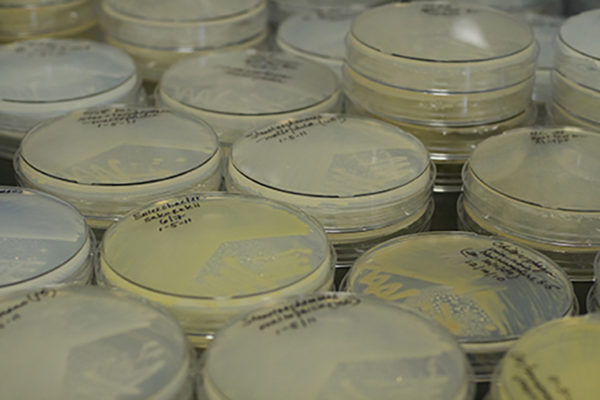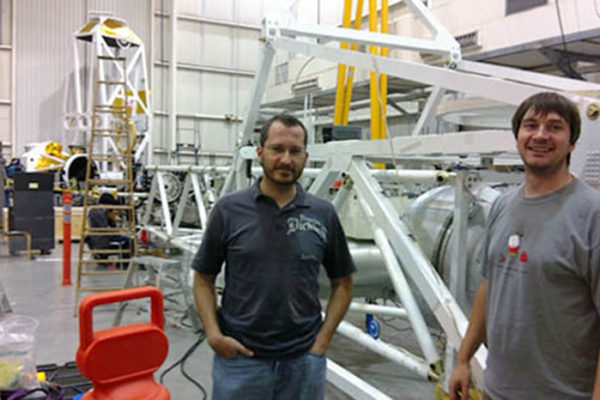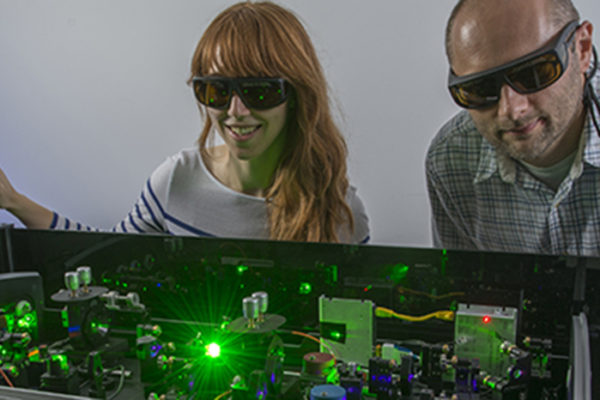What historians have to say about global warming
The public discussion of global warming can feel very stuck at times. An innovative course at Washington University in St.
Louis offers a way forward by making available the efforts of historians
to integrate natural history and human history over the past 40 years.
Taught by Venus Bivar, PhD, assistant professor of history in Arts & Sciences, it is an
introduction to a discipline called environmental history, with a
special focus on climate change.
Model organism gone wild
Some wild clones of social amoebas farm the bacteria they eat, but this is a losing strategy if nonfarming amoebas can steal the farmers’ crops. To make the strategy work, the farmers also carry bacteria that secrete chemicals that poison free riders. The work suggest farming is complex evolutionary adaptation that requires additional strategies, such as recruiting third parties, to effectively defend and privatize the crops, the Washington University in St. Louis scientists say.
Balloon-borne astronomy experiment X-Calibur racing to hit wind window
In a few days, a balloon-borne telescope sensitive to
the polarization of high-energy “hard” X-rays will ascend to the edge of
the atmosphere above Fort Sumner, N.M. Once aloft, the telescope will stare at black holes, neutron stars
and other exotic astronomical objects that shine brightly in the X-ray part of the spectrum in order to learn about their nature and structure. After years of preparation, the X-Calibur team is racing to get the experiment mission-ready in time for the stratospheric wind event they hope to ride.
Lab-made complexes are “sun sponges”
In the Aug. 6, 2013, online edition of Chemical Science, a team of scientists describes a testbed for light-harvesting antennas, the structures that capture the sun’s light in plants and bacteria. Prototype designs built on the testbed soak up more of the sun’s spectrum and are far easier to assemble than synthetic antennas made entirely from scratch. They offer the best of both worlds, combining human synthetic ingenuity with the repertoire of robust chemical machinery selected by evolution.
Frédéric Moynier awarded 2013 Kuno Prize
Frédéric Moynier, PhD, associate professor of earth
and planetary sciences in Arts & Sciences, has been named the
recipient of the 2013 Hisashi Kuno award given by the American
Geophysical Union.
The award is given annually to recognize the scientific
accomplishments of junior scientists who make outstanding contributions
to the fields of volcanology, geochemistry and petrology.
Successful dry run for the 2020 Mars Mission
In June, a rover named Zoe
set out into the Atacama Desert on the west coast of South America to test a suite of instruments intended for future missions to Mars under Mars-like conditions. One of the instruments aboard Zoe was a Raman spectrometer designed by a team led by Alian Wang of Washington University in St. Louis. A fragile lab instrument that was ruggidized to survive the desert, the Raman spectrometer is expected to fly on the 2020 Mars mission.
Social amoebae travel with a posse
Some social amoebae farm the bacteria they eat. Now a collaboration of scientists at Washington University in St.
Louis and Harvard University has taken a closer look at one lineage, or
clone, of D. discoideum farmer. This farmer carries not one but two strains of bacteria. One strain
is the “seed corn” for a crop of edible bacteria, and the other strain
is a weapon that produces defensive chemicals. The edible bacteria, the scientists found, evolved from the toxic one.
A chance to explore the hottest research topic in St. Louis
The International Society of Photosynthesis
Research, meeting this August in St. Louis, is offering an afternoon of
talks and demonstrations about the original “green” chemistry invented
by bacteria and plants and its relevance to our energy future. Intended for teachers, students and the public, “Photosynthesis in
our Lives” will take place from 3- 5 p.m. the afternoon of Sunday,
August 11, 2013 in the Parkview room at the Hyatt Regency at the Arch. RSVP to: http://parc.wustl.edu/outreachRSVP by August 7, 2013.
d’Avignon wins 2013 American Chemical Society Award
Washington University in St. Louis chemist D. André
d’Avignon, who manages the university’s high-resolution nuclear magnetic
resonance facility, has been named the winner of the 2013 Saint Louis
Award. The Saint Louis Award, administered by the St. Louis section of the American Chemical
Society, is given to an individual who has made outstanding
contributions to the profession of chemistry and demonstrated the potential
to further the advancement of the chemical profession.
How rice twice became a crop and twice became a weed — and what it means for the future
With the help of modern genetic technology and the
resources of the International Rice GeneBank, which contains more than
112,000 different types of rice, evolutionary biologist Kenneth Olsen has been able to look back in time at the double domestication of rice (in Asia and in Africa) and its double “de-domestication” to form two weedy strains. Olsen predicts the introduction of pesticide-resistant rice will drive ever faster adaptation in weedy rice.
View More Stories




